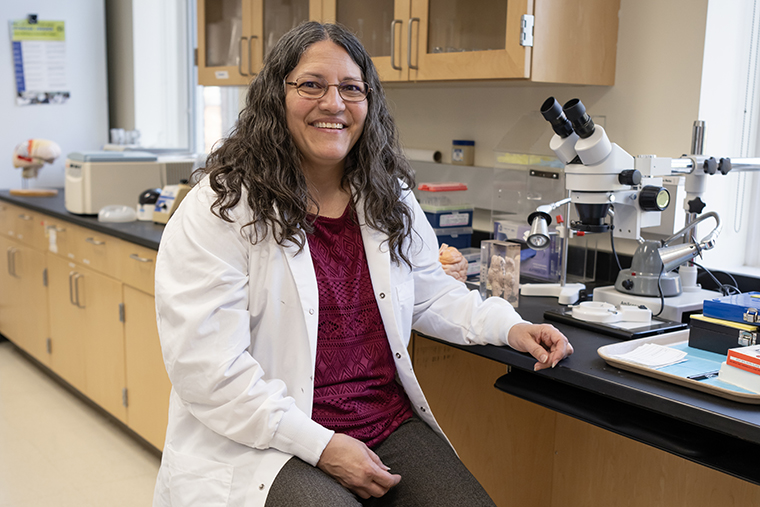Food for Thought
Blueberries, brain injuries, and neurodegenerative disorders—a professor takes her research to the next level.

Cindy Gibson, associate professor of psychology, researches therapeutics to improve outcomes after traumatic brain injuries. People who have suffered these injuries can go on to develop or have an earlier onset of Alzheimer's, Parkinson's, or another neurodegenerative disorder. She explained that it's possible to design coursework to get students involved all the way from the literature search to planning and running a long-term research project.
Gibson taught a course in the spring 2023 semester called Broken Brains, which got students involved in reading primary papers and studies on the latest research developments and breakthroughs in the basic mechanisms of Alzheimer's and Parkinson's. This past spring she taught "a neuro skills course … getting students some basic skills in and understanding of how to measure motor and behavior and things like that in rat models,” Gibson said.
She will likely recruit some students who have taken these courses to help with her latest project.
In the past, she has studied how diets, specifically diets rich in antioxidants, such as blueberries, can improve healing or have a protective effect after brain injuries in rat models.
“I'm mostly interested in finding ways of improving outcomes,” Gibson said. Her preliminary evidence from the antioxidant diet research has shown some “better cognitive guarding against fear in a startle task and possibly better cognition.” Gibson uses rat models because they age very quickly, with lifespans of about two years.
On her research sabbatical this coming fall, Gibson will use an antioxidant combination treatment that studies have found to have some therapeutic value in aging and Alzheimer's. She is eager to see if the new combination will have improved outcomes when it comes to brain injuries. “This is a combination that's very potent compared to just a dietary change,” Gibson said.
Over an 18-month period, Gibson will monitor the rats' motor and cognitive functions with a short-term but intensive antioxidant treatment “that's proven beneficial in other areas, but not brain injuries so far.”
Two studies have used the antioxidant combination Gibson intends to use, she said, but they only looked at outcomes up to six weeks out. Her study plans to monitor outcomes up to 18 months out “to see if there's differences in cognition like learning, social tasks, and things like that as well as their motor behavior,” she said. “I think we might see different patterns as we get into the older ages, particularly in the treated and untreated injured animals.”
Depending on the results of her research, Gibson said this treatment could have human and animal applications. “There's a whole area of veterinary research that's interested in outcomes after animals get brain injuries. Having a mechanism that helps with that would be helpful to both veterinary and medical practices,” she said. “Not everything I do has direct translation like that.”
Outside of her research, Gibson, who is also director of the neuroscience major and coordinator for the behavioral neuroscience concentration within the psychology major, said her most fun course to teach is Sensation and Perception. It's a lab class in which students experiment with their senses. They test their eyesight and color vision. They do experiments with taste, like tasting foods and then tasting the same foods without smell. “It's a very sort of get-to-know-your-own-senses kind of lab,” she said.
— MacKenzie Brady '21